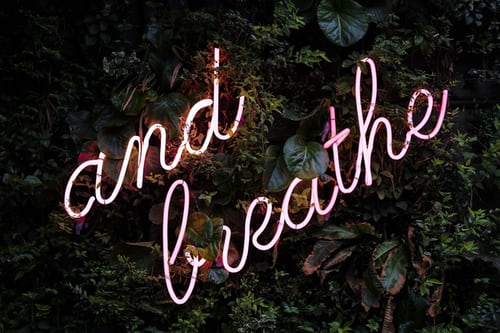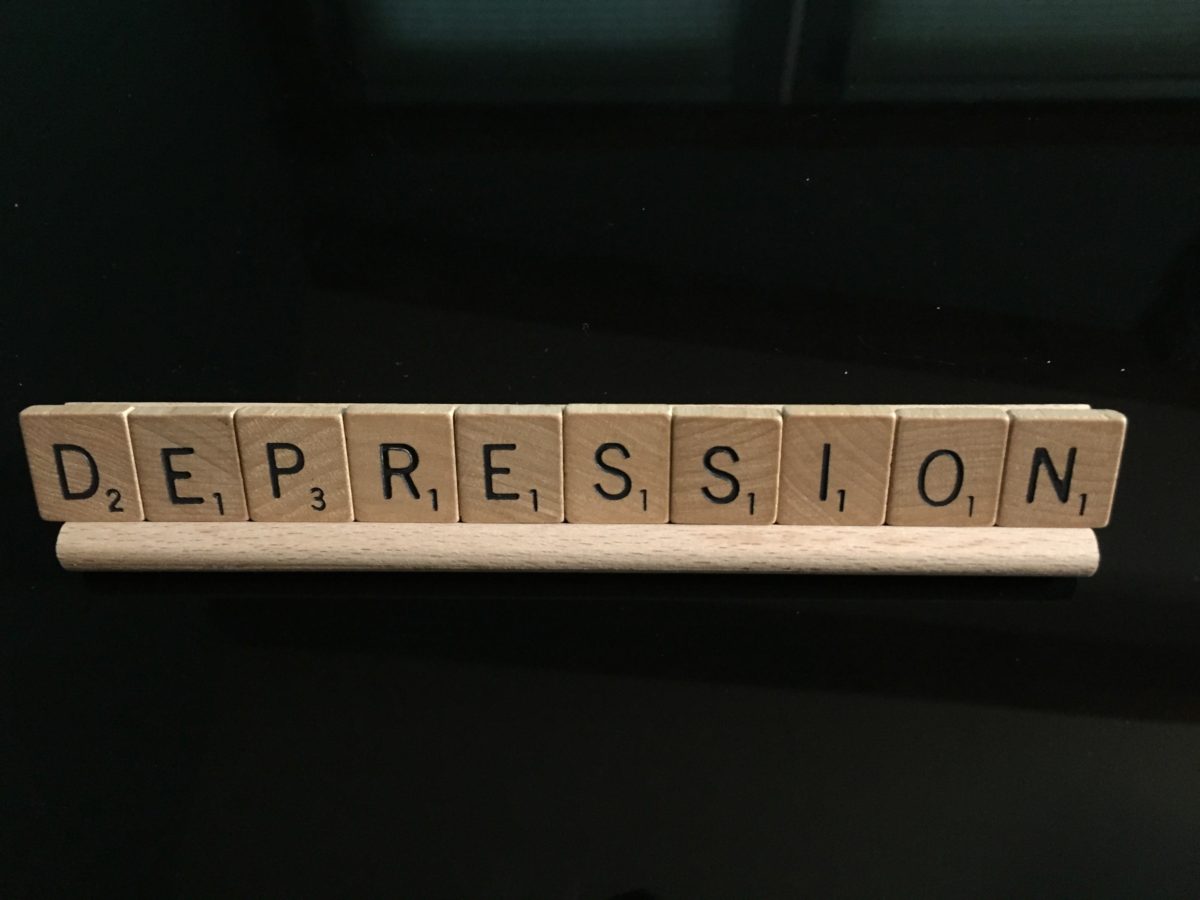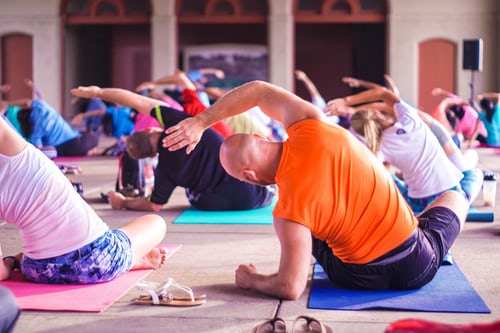Do you feel as though you’re being overwhelmed by your emotions and are barely able to cope with the COVID crisis that’s unhinged your world?
If you answer “yes” you’re not alone. Even the most “together” of us are experiencing a whirlwind of emotions. Emotions we don’t understand and are struggling to handle.
Do any of these feel familiar?
- Anger
- Fear
- Isolation
- Disillusionment
- Anxiety
- Sadness
- Self-blame
- Guilt
- Apprehension
- Suspicion
- Hyper-vigilance
- Scared
- Separation
- Depression
- Pain (physical)
- Numbness
- Doubt
- Dread
All of the above are classically categorized as “negative” emotions.
What about any “positive” emotions you might be feeling? Like:
- Joy
- Peace
- Gratitude
- Understanding
- Compassion
- Motivation (to help others)
- Trust (in faith, family, friends)
- Deepening faith
- Generosity
- Empathy
- Conviction
- Patience
- Kindness

Importance of validating Emotions—
You’ve likely heard when you were a child that there are “good” emotions and “bad” emotions, or at least gotten that impression based on something a parent or family member said or implied.
As a grief recovery chaplain, I’m going to tell you that it’s a travesty and healing hindrance to label them that way.
Why?
Because emotions just are. They’re feelings. And feelings aren’t good or bad. They are normal reactions to outside or internal stimuli—like death, loss, change, trauma, physical illness or injury, and shock.
When we label emotions good or bad, we often try to dismiss them or accentuate them. Other people may help us in that dismissing or accentuating (playing into) process; and they may shut us down from sharing or expressing them. But I’m going to encourage you!
Validate your feelings even if no one else will.
When you validate your feelings, you’re better able to identify those emotions and the root cause for them, evaluate them, and avoid being hampered by them or stuck in them.
We validate our emotions without letting them rule our lives.
Emotions are innocent. We must try to avoid making value statements about them, and thinking or making value statements about the emotions others experience.
Because that’s where things tend to go wrong—when we either demean our emotion or get stuck in an emotion and can’t let go of it.
Your varying emotions will come and go. That’s normal. Having an emotion doesn’t mean something is wrong with you.
But they can overtake you in a variety of ways.
And dismissing or hanging on to them can cause short and long-term problems.

Emotions and Physical Symptoms—
Emotions, and the mind-body neurochemical reaction to them, often trigger physical symptoms—headaches, backaches, stomach issues, sleep disturbances, inability to concentrate, allergies, asthma, and a host of other ailments.
The mind and body are really interconnected, and rarely does something happen in one system that doesn’t cause a chain reaction in the other. Perceived external or internal threats can take over every cell in our body.
Who hasn’t experienced a situation where abrupt fear hasn’t caused our heart rate to skyrocket, our blood pressure to sore, and our breathing to race?
It’s the old term many of you are familiar with: psychosomatic. Brain and body.
And many of the stresses we’re experiencing right now in this COVID19 crisis can dredge up emotions from old wounds and events we thought we’d healed from or moved past.

The purpose of validating our emotions—
As Dr. James Gordon, author of the book The Transformation, points out, there is a process to validating and understanding our emotions and dealing with them.
- The first step is to pay attention to your emotions.
- Then clearly see the messages they’re bringing to you.
- Work with what the emotions can teach or reveal to you.
- See what ways you can grow through and beyond the emotion to heal.
As I noted above, it’s not a good idea to try to suppress your emotions. When we do that, we usually end up creating more physical and psychological problems for ourselves.
What we can do is use our imaginations and creativities to discover what to do with these emotions. Keeping a journal helps in this process.
So how can we best identify, validate and respond to these wild emotions?
At the end of this post, I’ll give you several tips for validating and releasing your emotions and the stress they can cause. I’ll give you several tips today and more in the following weeks.
To keep you from getting stuck in your emotions.

What does validating emotions have to do with grief?
Many of us are experiencing grief right now, and we don’t know it.
We can recognize grief by identifying and validating our emotions.
How do we know it’s grief?
To understand the answer to that question, let’s look at the definition of grief The Grief Recovery Institute experts provide us:
Grief is the conflicting feelings caused by a change or an end in a familiar pattern of behavior.
- Changes in living arrangements—lockdowns, quarantines, new environments.
- Loss of familiarity—schedule changes, loss of daily or weekly gatherings
- Tangible or intangible losses, obvious or hidden—family members, friendships, belongings, jobs.
As C.S. Lewis so poignantly noted in his book A Grief Observed:
“No one ever told me that grief felt so like fear. I am not afraid, but the sensation is like being afraid. The same fluttering in the stomach, the same restlessness, the yawning. I keep on swallowing.
At other times it feels like being mildly drunk, or concussed. There is a sort of invisible blanket between the world and me. I find it hard to take in what anyone says. Or perhaps, hard to want to take it in. It is so uninteresting. Yet I want the others to be about me. I dread the moments when the house is empty. If only they would talk to one another and not to me.”
Do any of these emotions and sensations sound familiar to you?
We have a sense of numbness, a decreased ability to concentrate. Maybe a decreased ability to care about anything going on around us. A struggle to get up, maintain a schedule and slog through our boring, same-old, same-old day.
Maybe our eating habits have gone awry. We have no appetite, or too much of one. We nibble and snack and indulge out of fear or boredom. Because we have nothing to do, no more reason to maintain a healthy weight. Or no motivation to do it.
I’ve noticed on some of my ZOOM calls that people aren’t paying as much attention to their appearances. They can’t get their hair cut. They’re not interested in showering. For weeks makeup has languished in a bathroom drawer. They’re living in underwear or clothes they haven’t changed or washed in days.
But they’re washing their hands raw and sanitizing every surface in their homes several times a day.
They’re overwhelmed by their emotions and their bodies’ responses.
Something unordinary occurred, and the body responded to the “conflicting feelings caused by a change or an end in a familiar pattern of behavior.”
We’re responding to painful—sometimes overwhelmingly so—information and a pandemic that no action could have fully or properly prepared us for.
Even though countries have experienced pandemics before, little can prepare us for the emotional reactions we each have to this particular pandemic, and how it’s being handled.
It’s important to remember that these responses are normal.
It’s okay to have them. It’s when we don’t have them that we should worry.

Dealing with emotions and grief: focusing on small, correction actions—
Over the next several weeks, I’m going to give you some tips to help you uncover, validate and deal with emotions and your changes and losses. Confront your grief and heal.
But before we delve into this arena, we need to cover several bases.
- First, please don’t ever compare your loss with someone else’s; and don’t allow someone to compare her grief to yours.
Everyone handles her loss in her way. There is no “larger” loss to make yours seem small; no “smaller” loss to make yours feel larger or more significant.
A loss is a loss. Depending upon our ages, life experiences and faith, each of us handles our losses differently. Don’t ignore them and don’t grade them.
- Don’t expect time to heal you, or others. It’s not time that heals (a common statement and fallacy). It’s actions that bring healing.
The Grief Recovery Institute experts say,
“The false belief that time heals is probably the single largest impediment to recovery from loss of any kind.”
Instead, remember that:
“Recovery from grief or loss is achieved by a series of small and correct action choices made by the griever.”
For me, seeing a baby girl reminds me of my precious baby Victoria, and that memory still brings stabbing pain to my heart. The brain remembers, and it doesn’t ask permission before releasing memory chemicals of and pain response into my system. Sadness, remorse and regret automatically overtake me. If I allow those emotions to overwhelm me, depression will drip through my system until I’m overwhelmed by it.
But if I don’t try to stuff it and, instead, acknowledge it, note it, validate it and remind myself that sadness is a perfectly reasonable reaction to still have to my daughter’s death—and the trauma surrounding it—I’m okay.
I’m acknowledging I’m normal.
Like that event, I think many of us are going to be taking small, correct—healing—actions after this pandemic is long gone and parsed out in the history books.
- Understand that grief is a normal and natural reaction to any loss. It’s not a “pathological condition nor a personality disorder.”
But in the heat of a crisis, don’t be surprised if you find yourself having odds thoughts, performing odd behaviors, having odd dreams, or saying unusual things.
A couple of weeks into our quarantine, I had a PTSD nightmare I thought I’d never have again. It had been years since my last one. But there it was again. Not as intense. And, actually, it provided a happier ending.
And the funny thing about it was that I was in a light sleep and knew I was having it. And this time I didn’t seem to want to run away from it.
- Most of us have grown up with a multitude of myths that only hamper our emotions and grief responses.
In the following weeks, we’ll look at those and see how we can correct them. Further help for validating our emotions and healing.
Facing realities—
Normal isn’t normal anymore. And that may be part of the bigger emotional problem.
For better or worse, any kind of change is stressful, and our brains react accordingly. Stress hormones get dumped into our body systems, and our bodies respond. Adrenaline pumps. So much adrenaline that we might get wiped out from system overload.
For most of us this pandemic and the resulting lockdowns, job losses, massive schedule and life upheavals have been traumatic. And our brains (and bodies) are trying to process all of it, at one time. It’s not healthy or productive to try to ignore it or wish it away.
We may be looking at a new paradigm that will take time to become familiar and comfortable with.
I want to provide the tools and resources you need to survive this storm and thrive!

Invitation—
I invite and encourage you to use the following tools to identify and validate your emotions and not allow yourself to get stuck in them.

- Keep an emotions journal—
One way of validating and responding is by keeping an emotions journal.
There are big benefits to jotting down your emotions on paper, even if your emotions flip flop wildly throughout the day.
And now’s a perfect time to start keeping one.
Seeing them written down in a journal helps validate them. It makes them real and manageable. And it tells you a lot about you and your present needs.
Many of us don’t have any place we can vacate to—alone—right now to assess and decompress. To blow off steam. To weep over losses and unknown futures. Although locking yourself in a bathroom and turning the radio up REALLY loudly might suffice.
Having a journal, or even loose paper you can keep together as a journal, is effective in noting how your emotions change throughout the day, and how you can validate and respond to them.

- Learn to breathe and release—
Learning meditation-type breathing techniques is invaluable for allowing the release of emotions. It allows us to be more fully aware, moment-by-moment, of how our what emotions might be lurking just below the surface and affecting us physically or psychologically.
Breathing can also tune you in to just how quickly emotions can come and go. And we can use our imaginations and creativity to learn what to do with our emotions.
You can find a lot of meditative breathing techniques on line. I’ve included some here for you. They can be done lying down, sitting or standing. The process generally involves breathing in slowly, deeply through your nose and exhaling slowly and completely through your mouth, making sure you are using your diaphragm to fill your lungs and allowing your stomach muscles to relax, or soften.
Try to put away any distractions, like ringing phones, when you do these exercises, although when you get good, you will be able to perform them in a busy environment.
Once learned and frequently practiced, they can be very effective at slowing your breathing and dropping your heart rate and blood pressure.
Rather than thinking of breathing exercises as emptying your mind, I like to have my clients and patience just become aware of the emotions they are feeling, without casting any judgments on them. And becoming aware of how these emotions affect your body: tension, stress, and shallow breathing are frequent side effects of out-of-control emotions.
Five to ten minutes should be adequate. If this type of breathing is new to you, just starting with a couple of minutes can be enough.
After your breathing, note what emotions emerged and any accompanying thoughts you had with them. Don’t dwell on them. Just note them. You can spend time analyzing them later.
In the first video, Dr. Andrew Weil gives a great, brief presentation on the benefits of breathing modulation and its effects on illnesses. He says it’s the constancy—regularity—of doing these exercises that result in dramatic changes.
In this next video, Dr. Weil teaches yoga breathing.
This City of Hope video provides a little more in depth breathing and imagery. The video below is longer and includes a guide imagery technique too. Just doing the breathing exercises for several minutes is enough for now.
And now we can move on to another tool.

- Draw your emotions—
Any kind of drawing—putting pen or pencil to paper—can stimulate the brain and creativity.
And emotions can be expressed through drawings. Even childlike ones. So don’t think that you have to be an artist to utilize this tool.
Grab several pieces of paper and crayons or markers.
Do the drawings quickly, with no more than several minutes spent on each. The drawings are simply about self-discovery.
Drawing #1: Draw a picture of you right now, the emotions you feel. Stick figures. Representative symbols. These aren’t complicated or necessarily detailed.
Drawing #2: Draw yourself and your biggest problem. The problem might be represented by a shape, a color, a word. What kind of emotions trigger this drawing?
Drawing #3: Draw yourself with your problem solved. How does the solving make you feel? Those are the emotions your want to recognize.

- Dancing or shaking—
Free dancing and body shaking are wonderful ways to identify emotions and express them.
When I was using movement gymnastics with my elementary school classes, I’d give each student a colorful scarf to dance to music with, run around the gym with. Dance with. Because they were less inhibited or self-aware, the kindergarten students were a joy to watch.
They stopped watching each other and just went with the movements their little bodies were dying to exhibit. They choreographed their emotions, their joys, their delights, their inhabitations. Their creativity. They danced and moved to their emotions.
They loosened up and released. They laughed and shouted.
Shaking can do the same thing.
This video offers a great teaching.
I hope you find these suggestions helpful.
NEXT WEEK: we’ll look at the myths of grief that hamper our long-term healing, and I’ll give you more tools to release and validate your emotions.
Until then,
keep breathing, dancing, and drawing. And remember that in any situation, we can make our life better and more fulfilling.
See you back here next week!
Blessings,
Andrea
Andrea Arthur Owan, M.S., A.T., R., is a fitness pro, chaplain, and award-winning inspirational writer. She works and writes to help people recover from trauma, grief and loss and to live their best lives — physically, emotionally, and spiritually.





